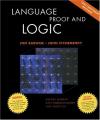
A Maximum Entropy Approach to Natural Language Processing
by A. L. Berger, S. A. Della Pietra, V. J. Della Pietra
Publisher: Association for Computational Linguistics 1996
Number of pages: 36
Description:
The authors describe a method for statistical modeling based on maximum entropy. They present a maximum-likelihood approach for automatically constructing maximum entropy models and describe how to implement this approach efficiently, using as examples several problems in natural language processing.
Download or read it online for free here:
Download link
(1.8MB, PDF)
Similar books
 Natural Language Processing for Prolog Programmers
Natural Language Processing for Prolog Programmersby Michael A. Covington - Prentice-Hall
Designed to bridge the gap for those who know Prolog but have no background in linguistics, this book concentrates on turning theories into practical techniques. Coverage includes template and keyword systems, definite clause grammars, and more.
(10827 views)
 Notes on Computational Linguistics
Notes on Computational Linguisticsby Edward Stabler - UCLA
What kind of computational device could use a system like a human language? This text explores the computational properties of devices that could compute morphological and syntactic analyses, and recognize semantic relations among sentences.
(16228 views)
 Natural Language Processing for the Working Programmer
Natural Language Processing for the Working Programmerby Daniël de Kok, Harm Brouwer
We will go into many of the techniques that so-called computational linguists use to analyze the structure of human language, and transform it into a form that computers work with. We chose Haskell as the main programming language for this book.
(16383 views)
 Language, Proof and Logic
Language, Proof and Logicby Jon Barwise, John Etchemendy - Center for the Study of Language
The book covers the boolean connectives, formal proof techniques, quantifiers, basic set theory, induction, proofs of soundness and completeness for propositional and predicate logic, and an accessible sketch of Godel's first incompleteness theorem.
(20446 views)